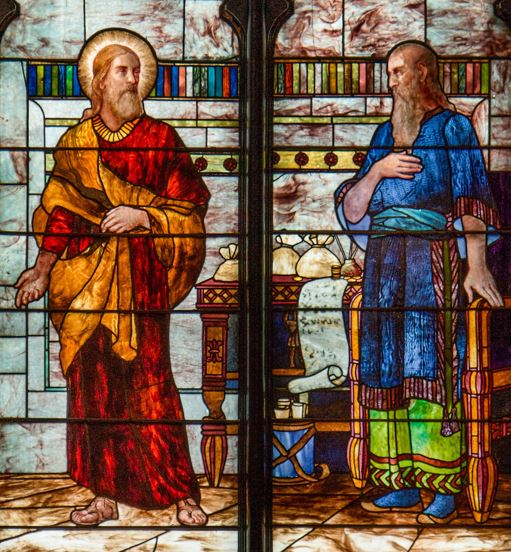SGAA and the Tariff Question: A Century of Strategic Advocacy
Since the mid-19th century, U.S. stained glass studios have faced constant economic pressure from imported glasswork—pressures rooted in global wage disparities, material costs, and changing U.S. trade policy. Tariffs, particularly those levied on stained glass, have shaped not only the business viability of American studios but also the broader artistic and cultural standing of the domestic stained glass movement.
The recurring “tariff question” became a crucible through which the American stained glass community organized, strategized, and ultimately founded what became the Stained Glass Association of America. From fragmented petitions in the 1880s to landmark Supreme Court cases in the 1890s, from congressional lobbying in the 1920s to union-backed testimony in the 1950s, the SGAA emerged not just as a professional organization, but as a defender of fair trade and artistic equity.
By 2025, SGAA once again found itself responding to proposed tariff changes. The moment serves as a reminder: trade policy is never settled, and SGAA’s role as a vigilant, informed, and collaborative advocate is as vital today as it was at its founding.
The story of SGAA’s tariff engagement is ultimately one of adaptation, advocacy, and the collective will to find opportunity and innovation when faced with challenges and uncertainty.
The Power of our International Community Members and Collective Memory
Besides tariffs, U.S. government actions have affected stained glass producers in the past regarding apprenticeship standards (1940s), consumer product safety (1970s), workplace safety (1980s), and lead safety (1990s), among others. In each case the SGAA or partners in related trades managed to minimize or ameliorate the potential damage to the industry from potential collateral economic fallout resulting from government’s policies.
For the whole story, take a look at these SGQ issues from our archives:
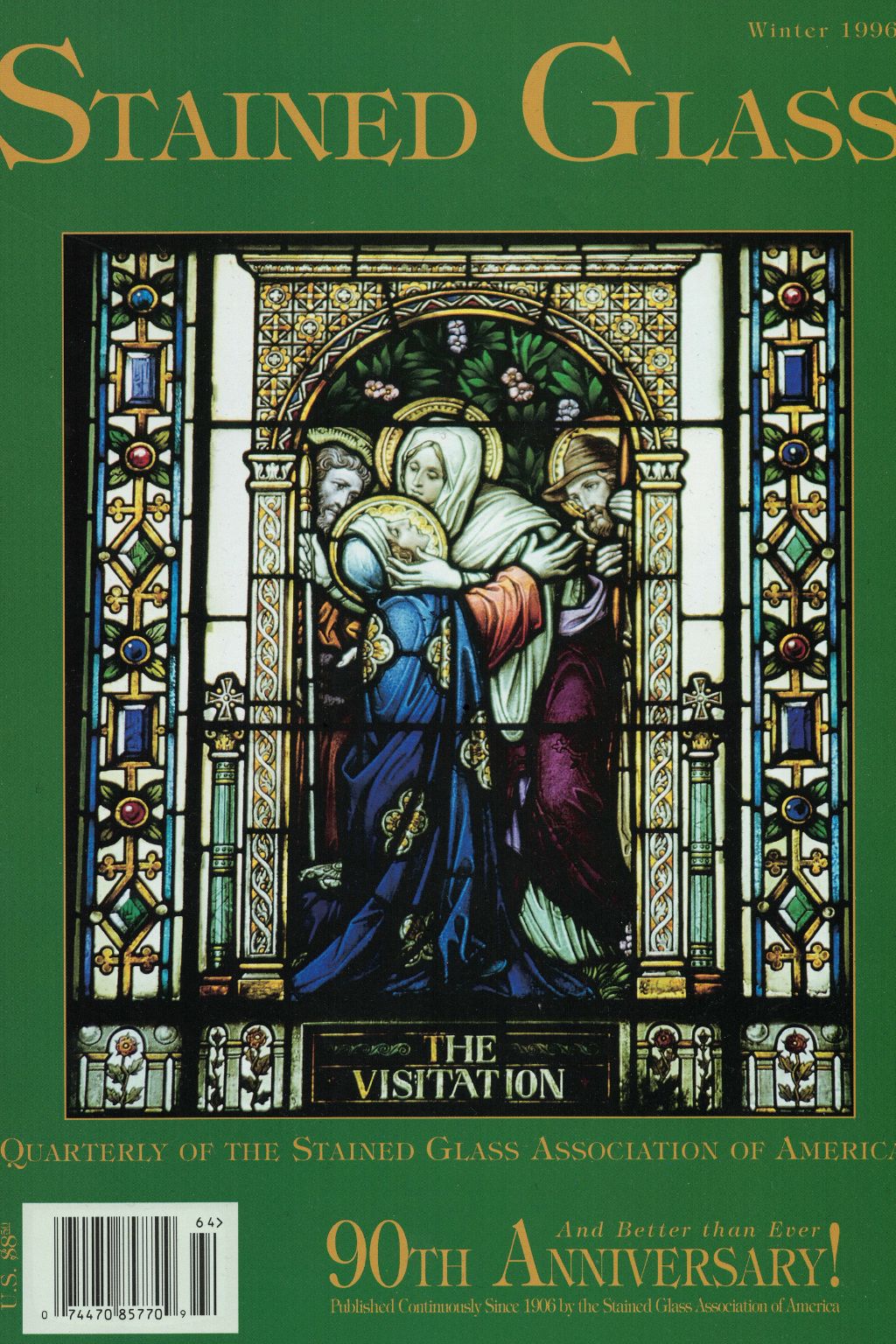
Read this issue from the archives here (opens new window)
“The Tariff Question Revisited: The Impetus for the Formation of the SGAA”
by William Serban
In the Winter 1996 Stained Glass Quarterly, Bill Serban wrote a synopsis of the 'wonky' tariff tug-of-war between the U.S. political parties affecting the SGAA and the entire stained glass profession up to the 1930s and beyond.
William Serban, “The Tariff Question Revisited: The Impetus for the Formation of the SGAA,” Stained Glass Quarterly, V. 91, No. 4, Winter 1996, pp. 293-305
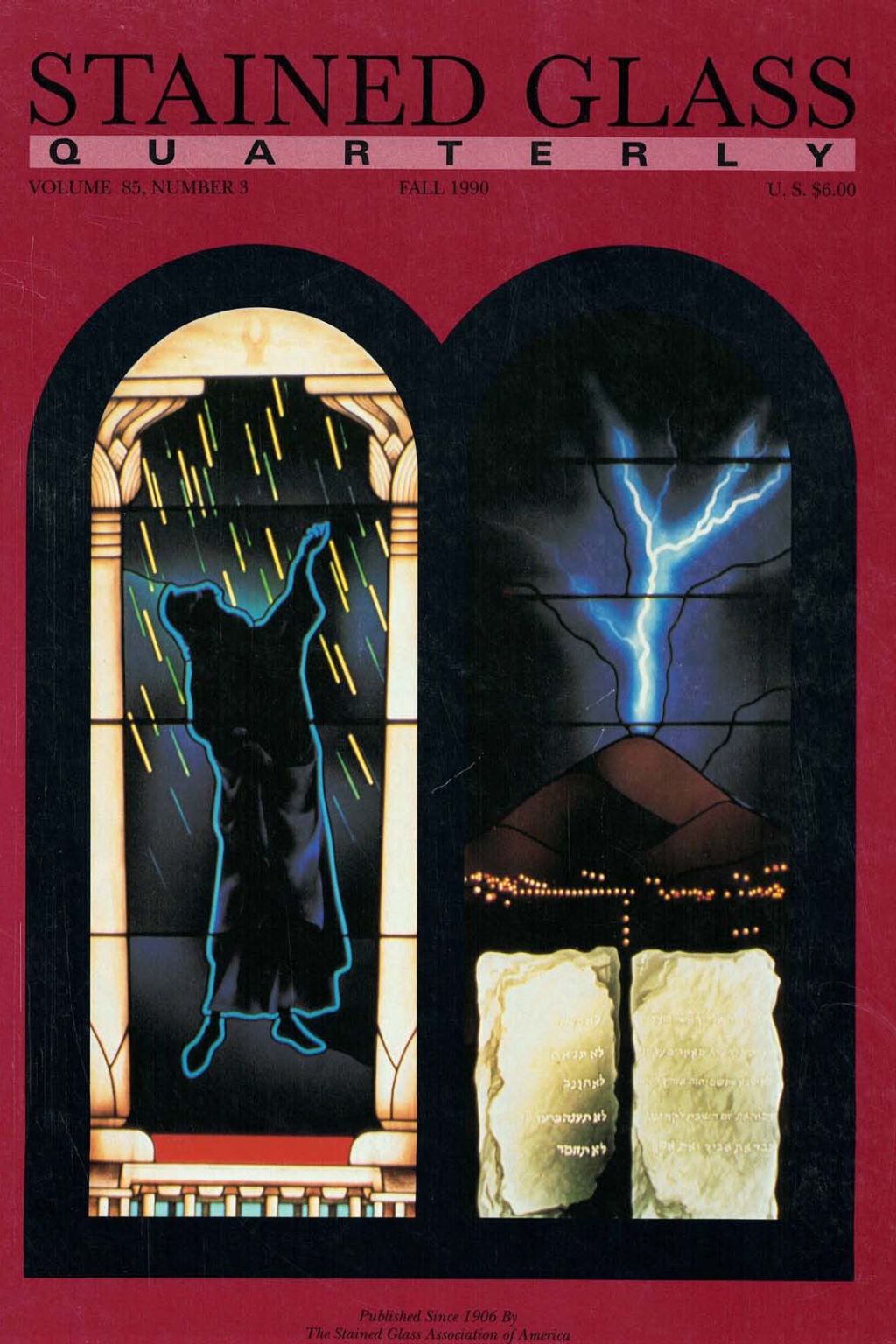
Read this issue from the archives here (opens new window)
"Stained Glass and Government Regulation: The Lead Issue"
by William Serban
In Volume 85, Number 3 (Fall 1990), William Serban wrote a political analysis and historical overview of the current
state of federal efforts to ban the use of lead. We scanned the entire issue so that you can see the letters to the editor and message from the SGAA President calling our members to action and helping inform them of the processes at work.
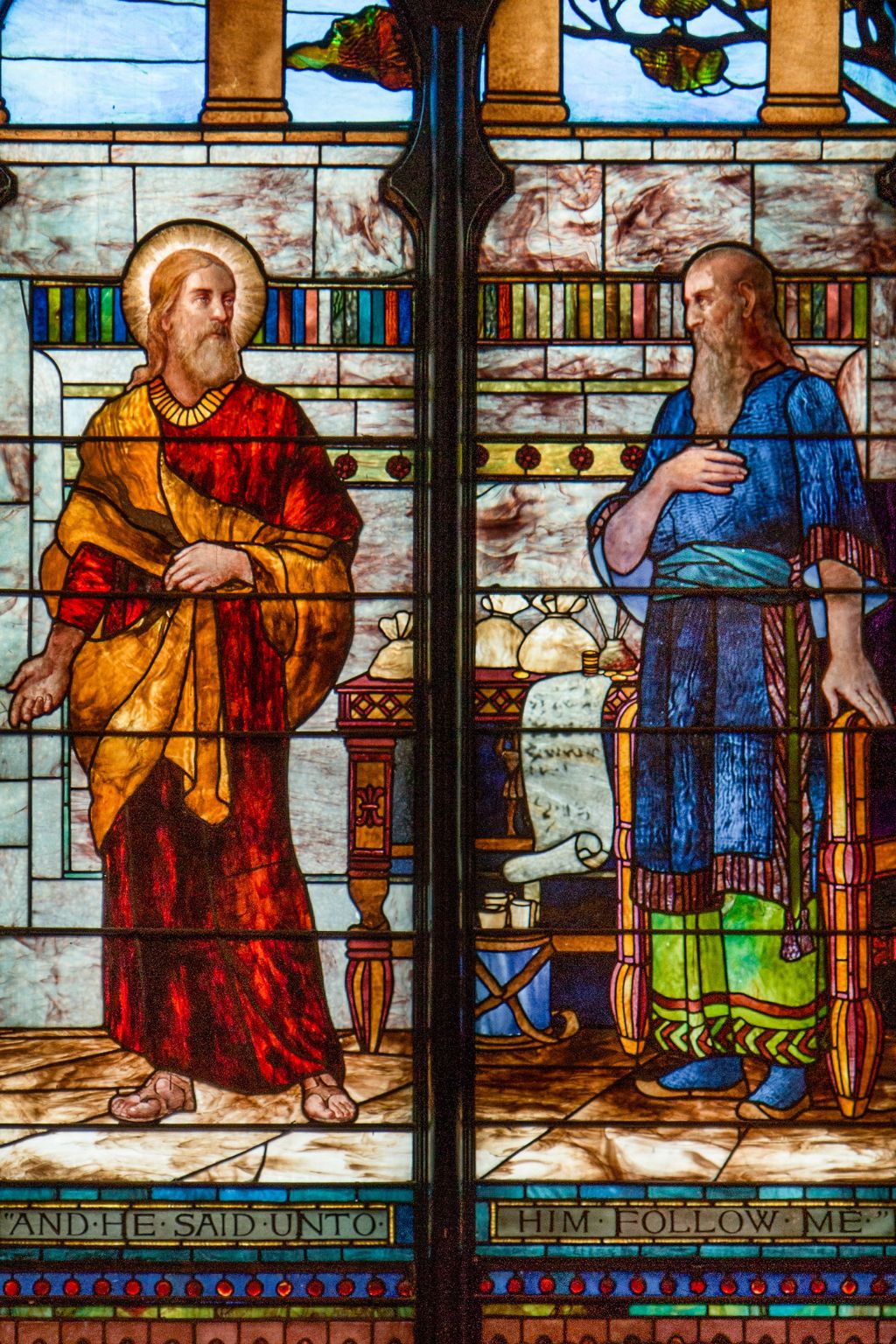
Read this upcoming article here
"The SGAA and the Tariff Question--Once Again!"
by William Serban
In an upcoming article, Bill outlines the SGAA’s historic and evolving role in advocacy, education, and coalition-building during tariff disputes from the 19th century to today. He emphasizes the importance of learning from past efforts and remaining vigilant, collaborative, and adaptable in the face of renewed trade challenges.
coming Vol. 120 No. 1
Legislative Action in the SGQ
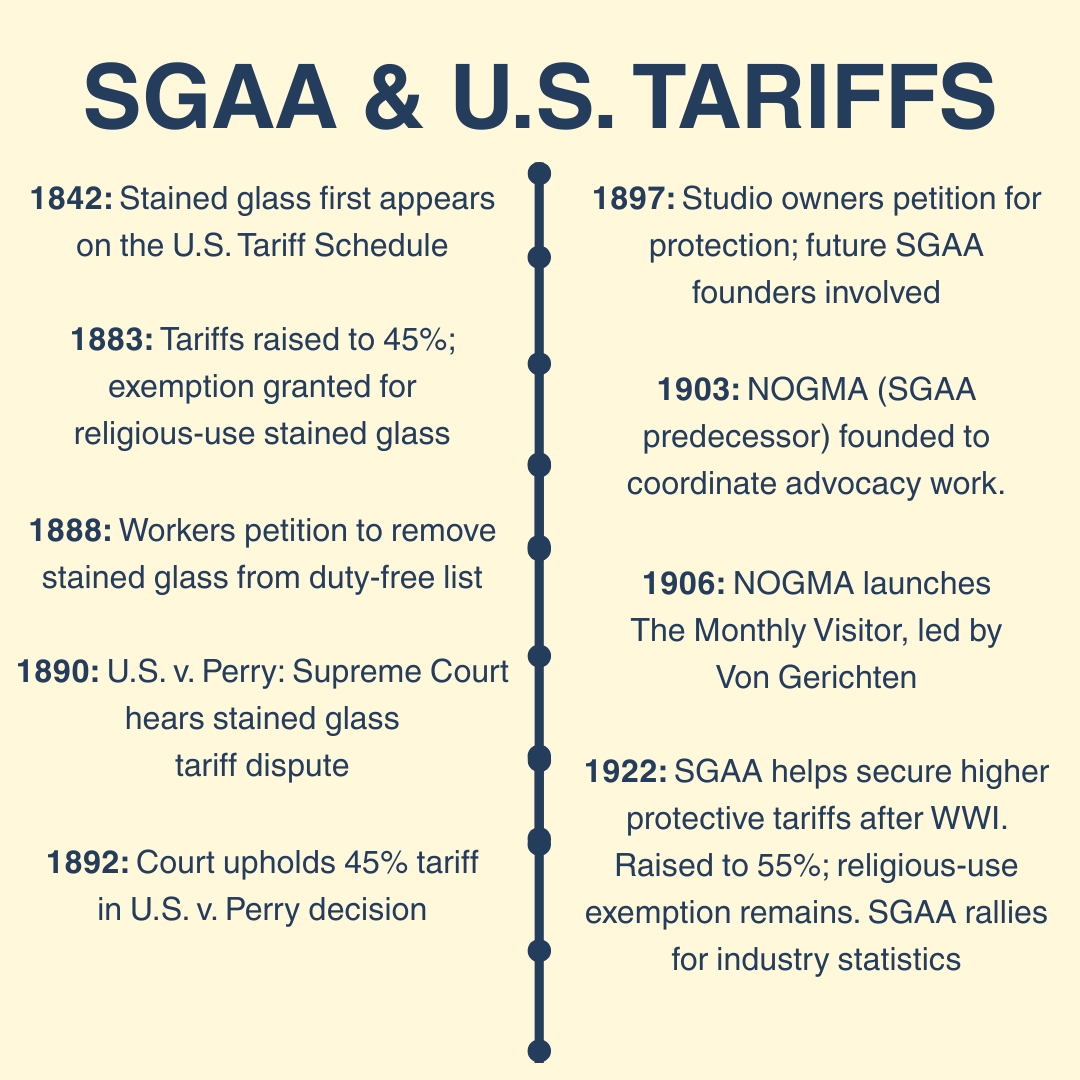
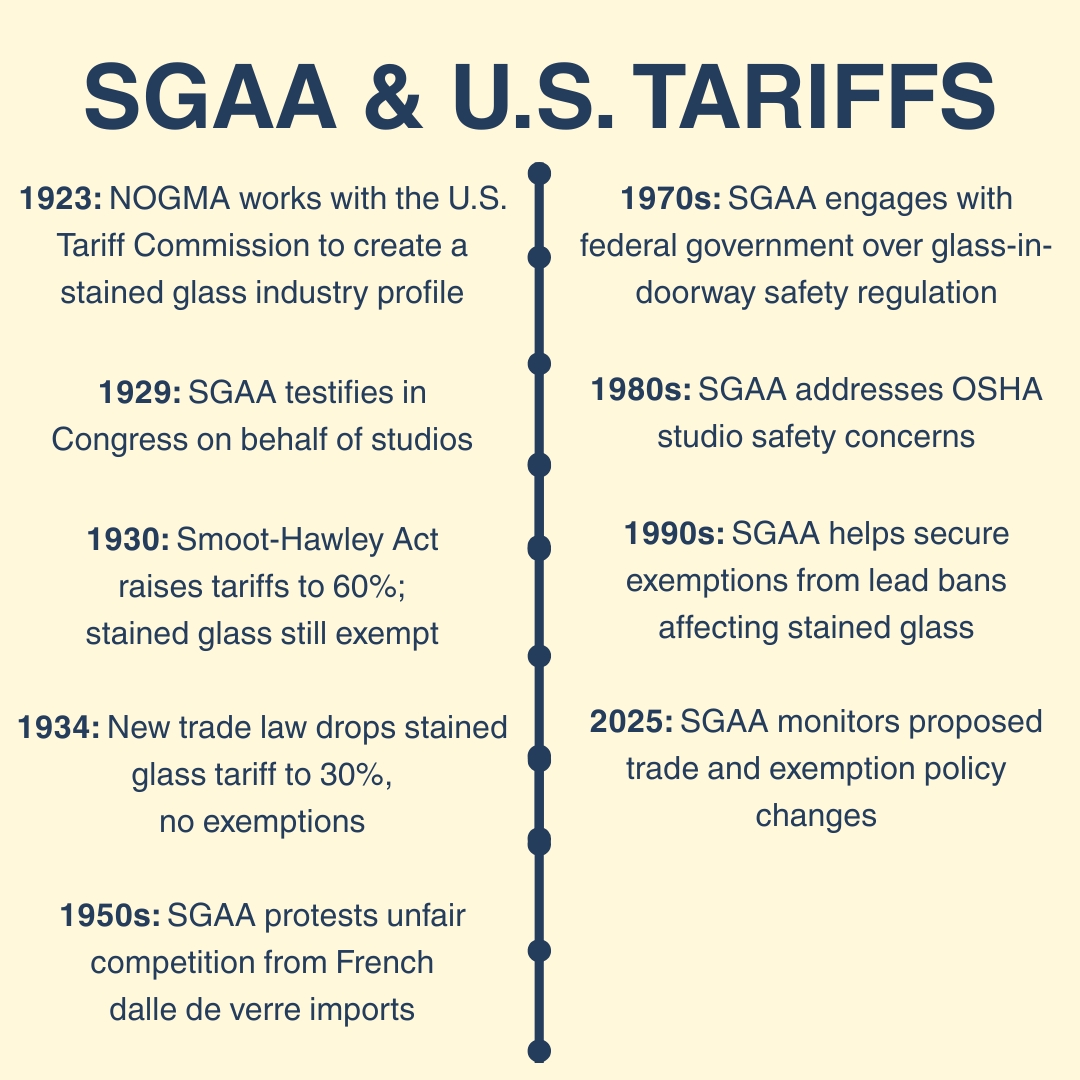
1842: First instance of stained glass appearing on the U.S Tariff Schedule.
1883: Congress raises stained glass tariff rates to 45% but passes a provision for duty-free entry of windows intended for religious institutions.
1888: The United Stained Glass Workers of New York send a petition to the Senate Finance Committee asking that stained and painted glass be stricken from the free list in the Wilson Tariff Bill under consideration.
1890: The case of United States v. Perry is the only case in U.S. history involving stained glass to reach the Supreme Court. The case involved the assessment of tariff’s on stained glass arriving in the port of New York and competing interests struggled to interpret the ambiguous exemption of “stained glass for religious purposes.”
1892: Supreme Court affirms 45% tariff on stained glass in United States v. Perry
1897: Another petition is organized on behalf of 14 studio owners from New York, Philadelphia and Buffalo. There is mounting evidence of the involvement of several key stained glass makers who eventually helped establish the SGAA: James Lamb, John Morgan and Ludwig Von Gerichten.
1903: SGAA predecessor National Ornamental Glass Manufacturers Association (NOGMA) founded to coordinate advocacy work.
1906: NOGMA sponsored a monthly publication called The Monthly Visitor, edited by tariff activist Ludwig Von Gerichten of Columbus, Ohio.
1922: SGAA helps secure higher protective tariffs after WWI - The tariff rate was increased to 55%, but stained glass for religious purposes was retained on the duty-free list if the window was valued at more than $15 per square foot.
1922: Otto Heinigke wrote in The Bulletin that the valuation provision contained the potential for direct action against unfair competition. He also realized the importance of building a strong set of economic statistics in order to prove to the government that unfair trade existed and rallied the community to help create that evidence.
1923: NOGMA set its sights on working with the U.S. Tariff Commission to create a stained glass industry profile.
1929: George L. Payne, of Paterson, NJ., served as the SGAA spokesman as congressional hearings regarding stained glass manufacturing.
1930: Smoot-Hawley Tariff Act is passed, raises rates to 60% but maintains stained glass on the duty-free list.
1934: The Reciprocal Trade Agreement Act of 1934 revolutionized trade policy and sets stained glass tariff rates at 30% with no exceptions.
1950s: French imports on dalle de verre bypass tariffs via legislation—SGAA protests that lower labor costs in French studios create unfair competition.
1970s: SGAA had formal interaction with the federal government in the late 1970s over a regulation to ban glass from doorways.
1980s: SGAA worked to show studio safety methods as it impacted OSHA regulations.
1990s: The SGAA organized lead safety information from across the country and Kirk Weaver of Pittsburgh Stained Glass Studios represented the community in congressional hearings over a congressional effort to ban lead in the environment which had the side effect of threatening to eliminate lead came from stained glass. The SGAA was successful in working with other Lead Manufacturing Industry Partners in gaining exemptions for the stained glass industry.
2025: SGAA prepares to work with Glass Manufacturing Partners to apply for exemptions if offered and continues to monitor ongoing changes to new federal trade legislation.
In summary, the legacy of advocacy put in place over decades of SGAA leadership and coalitions of studio owners, artists and members has been:
- Testifying before Customs Bureau officials about the enforcement of tariffs on stained glass
- Writing, calling and giving testimony to congressional committees and elected representatives about stained glass tariffs
- Writing, calling and submitting written evidence to U. S. presidents in order to support tariff legislation and enforcement
- Gathering documentation about safety and exposure to material over time to present to Congress and Regulatory Committees.
- Submitting legal briefs and being cross-examined before the Supreme Court about the tariff question
We would not be the SGAA we are today without our Members.
The SGAA extends heartfelt thanks to longtime member William “Bill” Serban for his tireless commitment to documenting and preserving our industry's legislative history. Through decades of research, writing, and reflection, Bill has ensured that the complex story of stained glass and trade policy remains accessible, relevant, and deeply human. His work reminds us that the struggles of past generations are not distant—they are foundational. We are grateful for his clarity, his dedication, and his unwavering belief in the power of collective memory.
William Serban, Ph.D., has been a member of the SGAA since 1976, He is an indexer of the Stained Glass Quarterly and co-editor of Stained Glass: A Guide to Information Sources (1980). He was also chairperson of the Political Science Department at Xavier University in New Orleans, La.
Bibliography of SGAA Advocacy Issues
TARIFFS:
Battersby, Mark E. “Perspective on Business: Basic International Business,” Stained Glass, v. 90, Sp. 1995, p. 5, 65-66. (Describes the process for import-export transactions).
Bradshaw, Geo. H. “Tariff Cutting Off Art Glass Workers,” Ornamental Glass Bulletin, v. 8, Nov. 1914, pp. 8-9.
“Favorable Tariff Legislation Anticipated,” Ornamental Glass Bulletin, v. 12, Jan. 1919, p. 11.
“Federal Tariff Commission,” Ornamental Glass Bulletin, v. 11, Mar. 1917, p. 6.
Flanagan, Joseph E. “Tariff Conditions as Now Existing,” Ornamental Glass Bulletin, v. 8, Aug. 1914, pp. 5-6.
______. “The Tariff Question Again,” Ornamental Glass Bulletin, v. 9, Oct. 1915, pp. 4-9.
Fordney, Jos. W. “Need for Protective Tariff Based on American Valuation,” Ornamental Glass Bulletin, v. 15, Nov. 1921, pp. 7-12.
“German Firms Evading Canadian Customs Tariff,” Ornamental Glass Bulletin, v. 6, Jul. 1912, pp. 9-10.
Hagedorn, George. “Foreign Competition,” Stained Glass, v. 61, Wi. 1966-67, p. 6.
Heinigke, Otto W. “Statement of the Provisions of the Tariff Law on Stained Glass,” Ornamental Glass Bulletin, v. 16, Oct. 1922, p. 6.
Jacoby, H.H. “A Tariff Talk,” Ornamental Glass Bulletin, v. 6, Jan. 1913, pp. 7-9.
Kelly, Eugene. “Stained Glass Has an Acute Problem,” Stained Glass, v. 47, Au. 1952, pp. 114-118.
Lamb, F.S. “”Tariff Decision,” Ornamental Glass Bulletin, v. 8, Dec. 1914, pp. 4-5.
Lapotka, Edward. “The Crux of the Situation,” Ornamental Glass Bulletin, v. 13, Feb. 1919, pp 8-10.
Lathrop, Francis., et al. “Petition of the Glass Stainers of 1893,” Ornamental Glass Bulletin, v. 3, Jan. 1909, pp. 5-6.
Lloyd, John Gilbert. Stained Glass in America, Jenkintown, Pa.: Foundation Press, 1963. (Chapter 8 on the “Economics of Stained Glass” offers an extensive overview of the tariff situation affecting stained glass from colonial times through 1960).
“No More Political Tariffs,” Ornamental Glass Bulletin, v. 9, Oct. 1915, p. 5.
O’Shaughnessy, Thomas. “Suppression of the Art Glass Industry,” Ornamental Glass Bulletin, v. 12, Mar. 1918, pp. 6-7.
Primo, Al. “Foreign Competition: Newest Threat to U.S. Jobs,” Stained Glass, v. 54, Aut. 1959, pp. 13-15.
Rambusch, Robert E. “Keeping the Craft Alive,” Stained Glass, v. 51, Sp. 1956, pp 4-7.
Schwab, C. M. “Special Convention on Tariff Legislation, Ornamental Glass Bulletin, v. 16, Feb. 1922, pp. 6-9
Serban, William. “The Tariff Question Revisited: The Impetus for the Formation of the SGAA,” Stained Glass, V. 91, Wi. 1996, pp. 293-305.
Shrosbree, Grace Flanagan. “Address Delivered May 2, 1914 at the Goodall Auditorium to the Imagined Assembled Body of Clergymen of the United States,” Ornamental Glass Bulletin, v. 8, May 1914, pp. 5-7. (A fervent plea to the American clergy to offer domestic stained glass makers the opportunity to excel at their craft through buying American, rather than imported, stained glass for churches).
“Stained Glass for a Church,” Ornamental Glass Bulletin, v. 7, Sept. 1913, pp. 4-5. (Looks at the importation of stained glass for the Cathedral of St. John the Divine in New York City as indicative of the tariff problem for American studios).
“Stained Glass Windows,” Ornamental Glass Bulletin, v. 8, Dec. 1914, pp. 5-7. (Reprints U.S. General Appraisers opinion on the duty-free entry provision of the 1913 tariff law).
“Tariff and the Cost of Living,” Ornamental Glass Bulletin, v. v. 16, Sept. 1922, pp. 9-10.
“Tariff Decision on Stained Glass and Pictorial Painted Windows,” Ornamental Glass Bulletin, v. 6, June 1912, pp. 6-10.
“Tariff Decision (T.D. 33159-G.A. 7424) Stained Glass Windows,” Ornamental Glass Bulletin, v. 7, Mar. 1913, pp. 6-7.
Von Gerichten, Ludwig. “Further Comparison Between the European and American Selling Price in the U.S.,” Ornamental Glass Bulletin, v. 2, Dec. 1908, pp. 5-6.
______. “Is the Present Tariff High Enough to Protect the American Craftsman Against European Competition?” Ornamental Glass Bulletin, v. 2, Ap. 1908, pp. 1-3, 5; reprinted Ornamental Glass Bulletin, v. 14, Dec. 1920 pp. 7-12; and Stained Glass, v. 48, Sp. 1953, pp. 44-46.
Webster, Wm. M. “Report on Tariff Conditions from Washington, the ‘Joker’ Eliminated,” Ornamental Glass Bulletin, v. 7, May 1913, pp. 4-5.
Willet, E. Crosby. “History: The Stained Glass Association of America,” in SGAA Reference and Technical Manual, 2d. ed. Edited by Dorothy L. Maddy, Barbara E. Krueger & Richard L. Hoover, Lee’s Summit, Mo.: The Stained Glass Association of America, 1992. (Chapter two on the history of the SGAA contains on pp. 30-31 a good synopsis of the tariff question).
LEAD USE AND SAFETY
Anderson, Jr., Loren A. “A Review of Blood Lead Results From the Third National Health and Nutrition Examination Survey,” Stained Glass, v. 90, Fa. 1995, pp. 232-33.
Browne, Marilyn, William Burke, Ron DePersis and Robert R. Stone. “Lead Safe Work Practices for the Stained Glass Artist,” Stained Glass, v. 83, Wi. 1988, pp. 306-12.
“D & L Contributes Recycling Revenues to SGAA Lead Fund,” Stained Glass, v. 87, Sp. 1991, p. 15.
Frohbeiter-Mueller, Jo. “Lead Poisoning—A Word to the Wise,” Stained Glass, v. 73, Wi. 1978-79, pp. 285-86.
Guffey, Steven, Ray McKinney and Ray Woodcock, “Lead Exposure and Its Control in a Stained Glass Studio,” Stained Glass, v. 74, Sp. 1979, pp. 49-53.
Hehemann, David G., James Whitney and Michael J.S. Tevesz. “Scientific Examination Reveals Composition of Lead Patina,” Stained Glass, v. 86, Su. 1991, pp. 140-43.
Hoover, Richard L. “Controlling Lead Exposure in a Studio Environment,” Stained Glass, v. 86, Su. 1991, pp. 164-65.
______. “Government Concerns Mount About Lead and Stained Glass,” Stained Glass, v. 86, Wi. 1991, p.p. 251, 304-05.
______. “Commentary: Help!” Stained Glass, v. 86, Wi. 1991, p. 247. (Opposes lead reduction bill affecting the stained glass industry).
______. “Is Lead the Scapegoat?” Stained Glass, v. 86, Sp. 1991, p. 3.
______. “Lead Bill in the U.S. Congress,” Stained Glass, v. 87, Sp. 1992, p. 3.
______. “Lead Safety,” Stained Glass, v. 85, Fa. 1990, pp. 258-59.
Long, Karen. “The OSHA Lead Standard & the Strained Glass Craft,” Stained Glass, v. 93, Su. 1998, pp. 138-42.
Makau, Ariana. “Mitigating Lead Exposure Hazard in Stained Glass Conservation,” Stained Glass, v. 114, Sp. 2019, pp. 42-45.
______. To Test (BLLs) or Not to Test—There Is No Question,” Stained Glass, v. 117, Su. 2022, pp. 41-43.
______. and David R. Hicks, “The Art of Health & Safety: Protecting Stained Glass Workers From Lead Exposure, Stained Glass, v. 115, Wi. 2020-2021, pp. 60-67.
Serban, William. “Stained Glass and Government Regulation: The Lead Issue,” Stained Glass Quarterly, v. 85, Fa. 1990, pp. 182-184.
Sueval, Eric. “The Safety Net: Lead: the Big Concern,” Stained Glass, v. 112, Fall 2017, pp. 68-69.
Whitney, James. “President’s Message,” Stained Glass, v. 115, Sp. 2020, p 4. (Discusses the effects of the Toxic Release Inventory on lead thresholds).
APPRENTICESHIP/LABOR STANDARDS
Bailey, Cleveland M. “Labor and Foreign Competition,” Ornamental Glass Bulletin, v. 55, Sp. 1960, pp. 48-51.
Burnham, Wilbur H., Jr. “Governmental Relations,” Stained Glass, v. 45, Aut. 1950, pp. 121-22.
Connick, Charles J. “Labor Conditions in Boston,” Ornamental Glass Bulletin, v. 14, Sept. 1920, pp. 6-9.
______. “The Open Shop in Boston,” Ornamental Glass Bulletin, v. 15, Feb. 1921, pp. 10-12.
Cummings, Harold W. “Report on Apprentices,” Stained Glass, v. 56, Aut. 1961, pp. 42-44.
Flanagan, Joseph E. “Labor Trouble,” Ornamental Glass Bulletin, v. 4, Oct. 1910, p. 2.
“History of Strikes and Lockouts,” Ornamental Glass Bulletin, v. 1, Oct. 1907, pp. 5-6
Markert, Robert. “Excerpt, Keynote Address on Apprenticeship to the Conference,” Stained Glass, v. 103, Sp. 2008, pp. 8-12, 69-70.
Millard, Richard. “The Stained Glass Apprentice,” Stained Glass, v. 70, Fa.-Wi. 1975, pp. 118-20.
Mueller, Geo. W. “The Laborer is Worthy of His Hire,” Ornamental Glass Bulletin, v. 18, Aug. 1924, pp. 6-7.
Rambusch, Harold. “The Apprenticeship Question,” Stained Glass, Sp. 1942, pp. 22-25.
Rambusch, Harold W., Harold W. Cummings, and Lawrence P. Lindelof. “Report to Craft Apprenticeship Committee,” Stained Glass, v. 40, Su. 1945, pp. 54-55.
“Report of the National Joint Apprenticeship Committee for Stained Glass,” Stained Glass, v. 44, Sp. 1949, pp. 17-21.
United States Bureau of Apprenticeship and Training. National Apprenticeship and Training Standard for Stained Glass Industry. Washington, D.C.: Government Printing Office, 1960. (These standards were jointly developed by the SGAA and the apprenticeship and training bureau).
Weis, Helene. “Apprenticeships: Problems and Prospects,” Stained Glass, v. 77, Wi. 1982-83, pp. 260-62.
Willet, E. Crosby. “History: The Stained Glass Association of America,” in SGAA Reference and Technical Manual, 2d. ed. (Edited by Dorothy L. Maddy, Barbara E. Krueger & Richard L. Hoover), Lee’s Summit, Mo.: The Stained Glass Association of America, 1992. (Chapter two on the history of the SGAA contains on pp. 31-32 an overview of the apprenticeship issue).
Willet, Henry Lee. “Apprentice Exhibition,” Stained Glass, v. 43, Au. 1948, pp. 75-85.
WORKPLACE/CONSUMER SAFETY
“’Americans With Disabilities Act’ To Effect Studios,” Stained Glass, v. 87, Fa. 1992, pp. 168-69.
Andrews, Jim. “Hydrofluoric Acid, Some Observations,” Stained Glass, v. 73, Sp. 1978, p. 11-12.
Gross, Richard. “From the Editor’s Desk: Ignoring an Issue Now May Result in Dire Consequences Later,” Stained Glass, v. 101, Wi. 2006, p. 3. (Addresses the issue of employee lawsuits over health and safety disputes).
Guffey, Steven, Ray McKinney and Ray Woodcock, “Lead Exposure and Its Control in a Stained Glass Studio,” Stained Glass, v. 74, Sp. 1979, pp. 49-53.
“Health & Safety,” Stained Glass, v. 118, Wi. 2023-2024, p. 71.
Hoover, Richard L. “Controlling Lead Exposure in a Studio Environment,” Stained Glass, v. 86, Su. 1991, pp. 164-65.
______. “SGAA Washington Conference Review,” Stained Glass, v. 86, Fa. 1991, pp. 208-09, 216-18. (Reviews the keynote theme of industrial hygiene).
Makau, Ariana. “Addressing the e-Elephant in the Room,” Stained Glass, v. 114, Sp. 2020, pp. 64-65. (Considers the issue of personal safety at the workplace).
Mominee, Terry. “Being Prepared … and Proactive,” Stained Glass, v. 105, Su. 2010, p. 96
Nixon, W.C. “Safe Handling of Frosting and Etching Solutions,” Stained Glass, v. 75, Fa. 1980, pp. 215-16.
“Perspective on Business, Stained Glass, v. 88, Fa. 1993, p.5. (Considers the effects of the federal budget reduction act on the stained glass industry).
Priest, Al. “Ladders and Safety on the Job Site,” Stained Glass, v. 107, Sp. 2012, pp. 63-64.
“Safety Standards for Architectural Glazing Materials,” in 2010 Sourcebook, a supplement to Stained Glass, pp. 14-15. (These guidelines are reprinted in the Sourcebooks up to 2013).
SGAA Recommendations for Safety in the Stained Glass Studio. Raytown, Mo.: The Stained Glass Association of America, 2005.
Simon, Wayne E. “Heat Loss Through Stained Glass Windows,” Stained Glass, v. 76, Su. 1981, pp. 123-25.
Stanton, Bryant J. “Superman vs. Mortal-Man,” Stained Glass, v. 116, Sp. 2021, pp. 6-7.
Suevel, Eric. “The Safety Net: “Feed Me Seymour”,” Stained Glass, v. 114, Sp. 2019, pp. 70-71.
______. The Safety Net: Ladder 101,” Stained Glass, v. 113, Su. 2018, pp 68-70.
______. “The Safety Net: OSHA, OSHA, OSHA!” Stained Glass, v. 112, Wi. 2017, pp. 63-64.
______. “The Safety Net: Toolbox Talk,” Stained Glass, v. 113, Sp. 2018, pp. 67-68.
